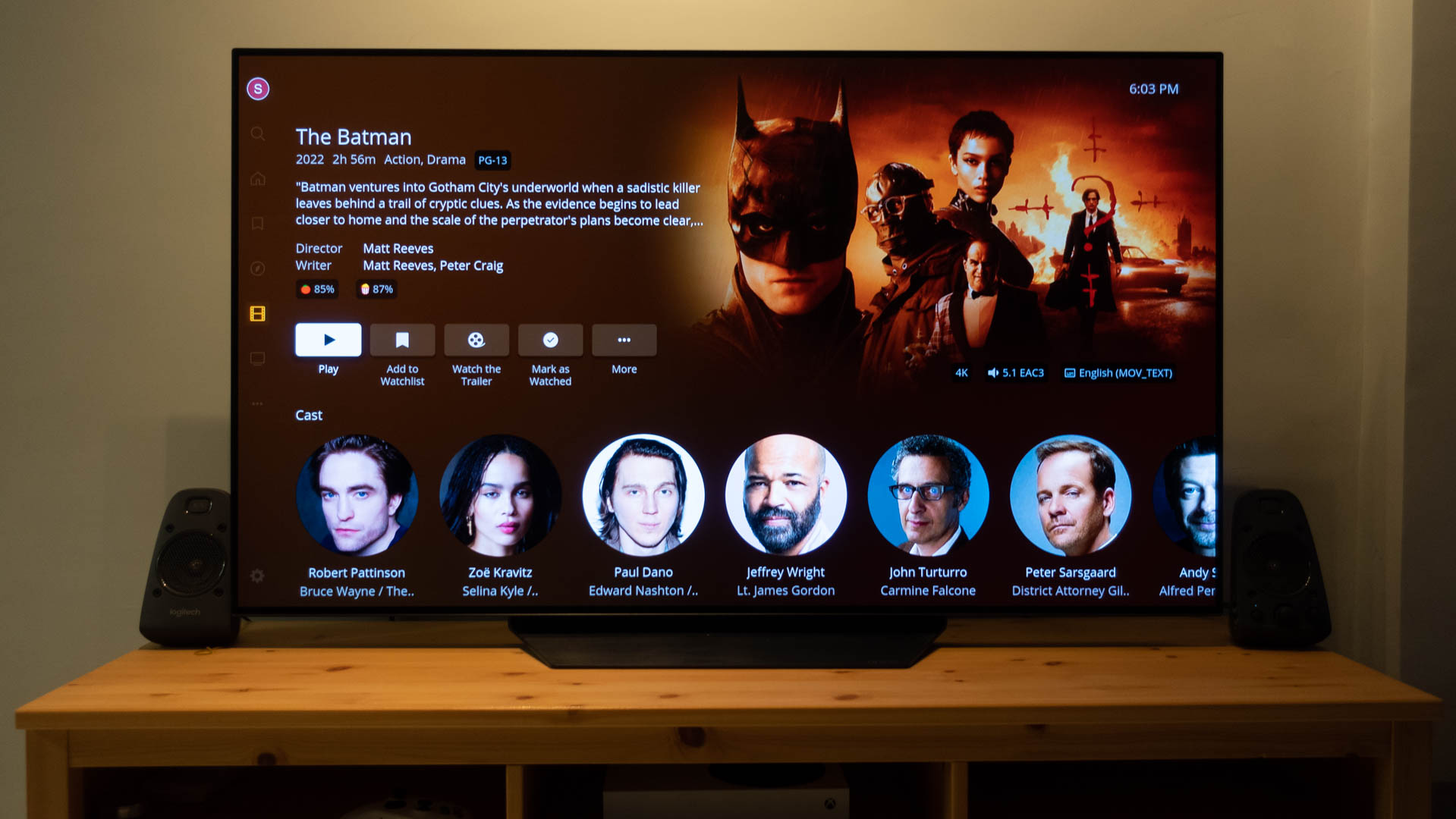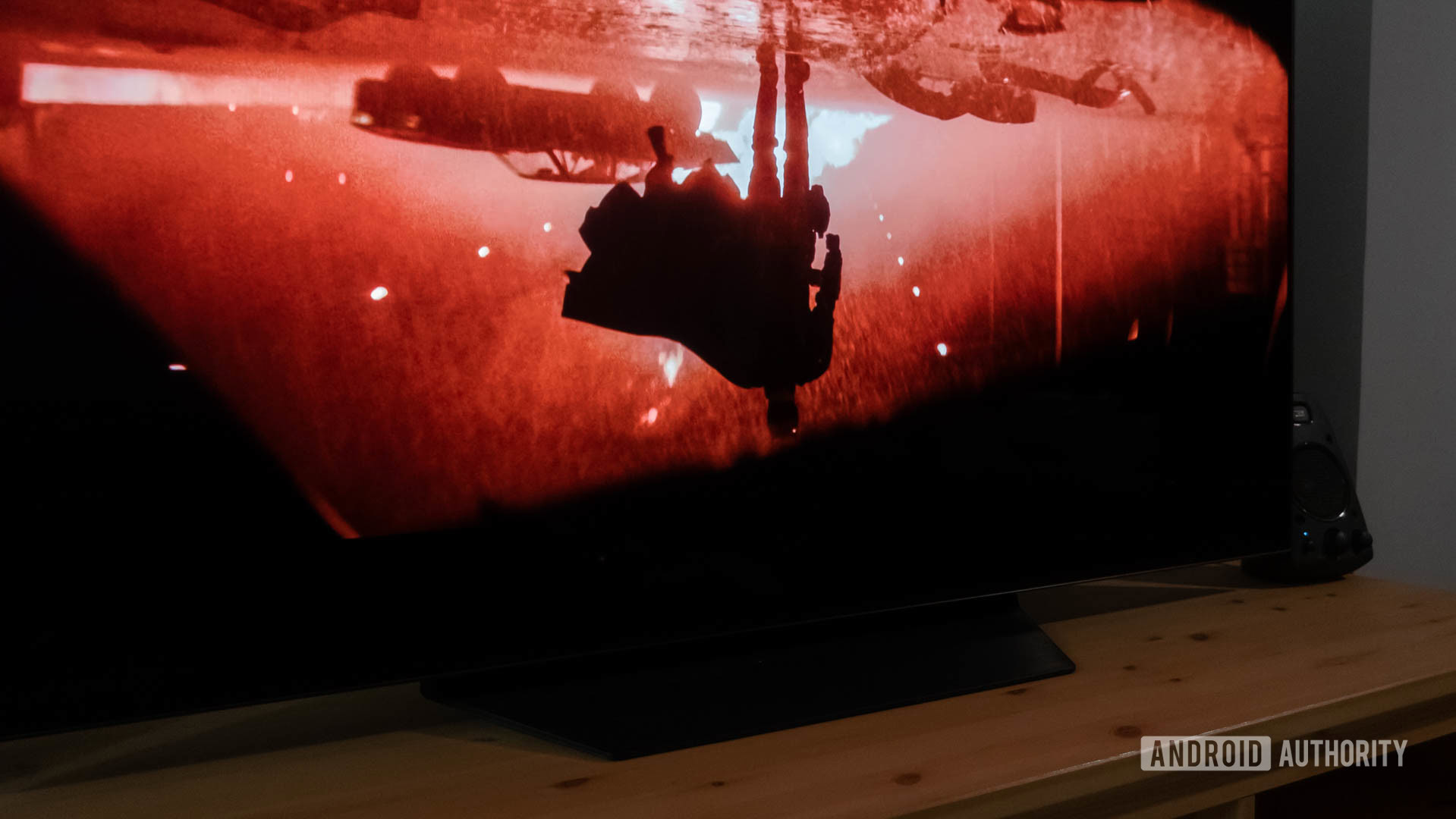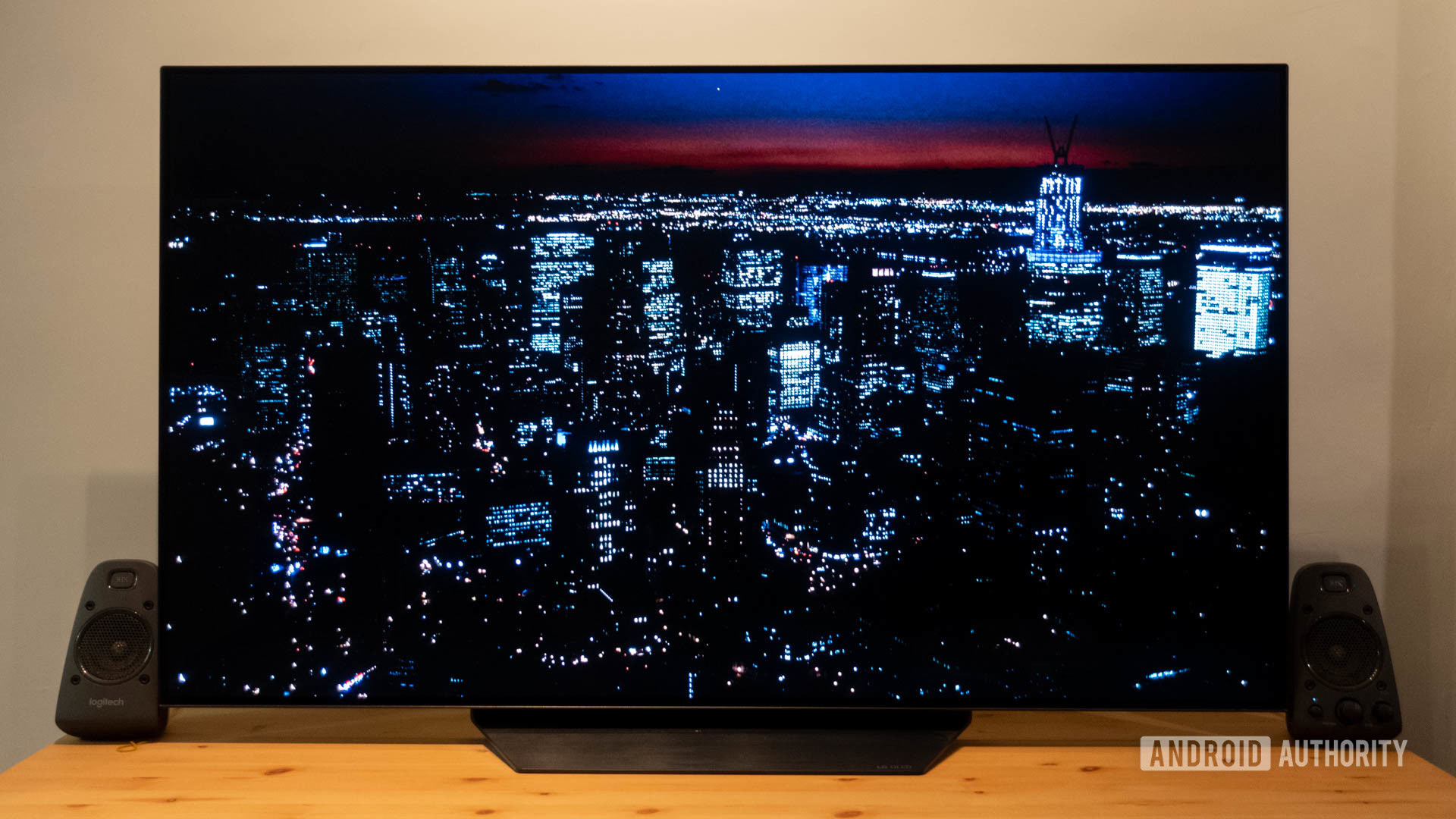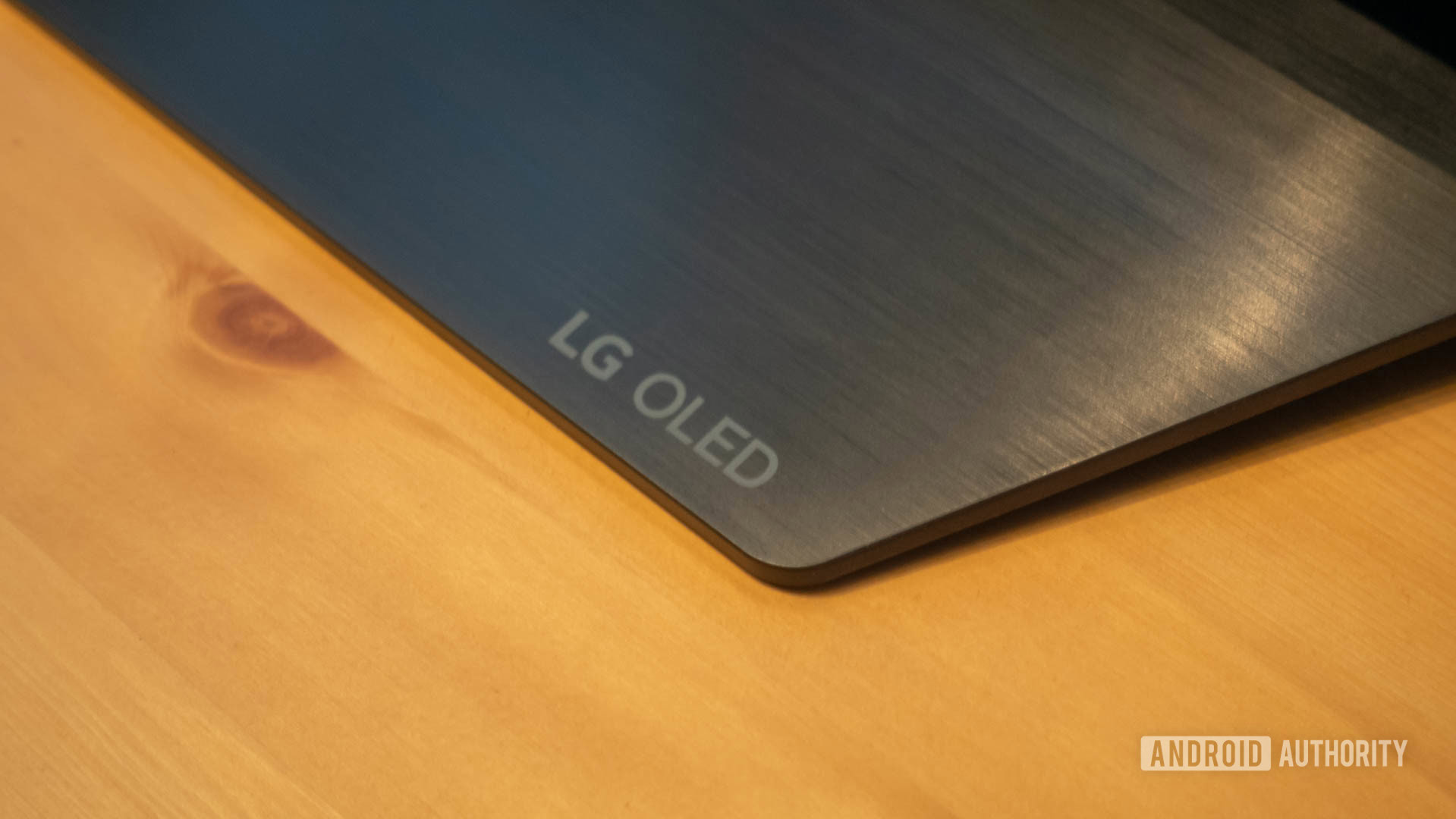Affiliate links on Android Authority may earn us a commission. Learn more.
Buying a budget OLED TV has ruined movie theaters for me
Published onNovember 28, 2022

For years now, marketing and ads have tried to push the narrative that 4K is the be-all and end-all of TV picture quality.
It’s genuinely hard to avoid the hype. Walk into any electronics store and you’ll see the UHD and 4K signs plastered everywhere, with some absurdly cheap price tags that make you wonder if the same manufacturers are trying to rip you off on high-end smart TVs that cost thousands of dollars. I know that feeling all too well because I once fell victim to the spec marketing hype.
In 2015, I bought my first 4K TV. At roughly $600, it wasn’t the cheapest on the market but not too far off either. Still, the spec sheet packed everything I thought I could possibly want from a TV — a large screen size, UHD resolution, HDR10 support, and even Android TV. But it wasn’t until I lived with it that I realized something was off — content looked washed out, HDR was somehow worse to my eyes than standard content, and fast-moving objects left behind a noticeable motion trail on the screen. The 4K resolution was present as advertised, but that did little to distract me from the glaring issues.
I bought into the spec hype and wasted nearly $600 on my first TV.
Fast forward to last year and I finally grew frustrated enough to replace that TV with something better. I had finally done enough research over these six years to know what I was looking for. In the end, I zeroed in on LG’s budget OLED TV.
Budget series or not, the OLED TV in question was still twice as expensive as the set I bought in 2015. And by now, 4K TVs with half-decent image quality had become even more affordable. I decided to splurge anyway, putting my faith in everything I’d learned about displays in the years prior, and I’m so glad I did.
Theater vs. OLED TV: An unfair fight?

Earlier this year, I decided to watch a screening of The Batman at my local movie theater. Within the first few minutes of the movie, I picked up on how muddy the overall visual presentation looked. Dark scenes looked washed out and devoid of any detail, making it difficult to follow action sequences and discern character details. And in bright scenes, the image often looked flat and dim. The movie’s iconic car crash scene (pictured above) lacked any semblance of color depth and dynamic range.
When I got back home, I immediately played back a 4K HDR master of The Dark Knight — the closest analog I could find at the time. There was simply no contest in terms of picture quality and visual impact, the OLED panel was spectacular in every single frame. And when The Batman eventually made its way to HBO Max a few months later, I rewatched it and realized just how many little visual details I had missed in the shadows.
I didn't fully appreciate my OLED TV's brilliance until I went back to a movie theater.
If you’re not familiar with OLED TVs, I’ll spare you most of the technical background (we have a dedicated explainer on display technologies), but the bottom line is that it doesn’t work the same way as standard LCD displays — or projectors, for that matter.
Put simply, every pixel on an OLED panel is a microscopic light source, which can be turned on or off as necessary. By contrast, regular TVs use large LEDs as a backlight to illuminate a liquid crystal layer that produces color images. That’s where LED TVs get their name from. But at the end of the day, they’re still just LCDs under a different name. Quantum dot layers and mini-LED can help improve an LCD’s color depth and black level, but by the time you add those, you’re paying as much as an OLED TV anyway.
OLED’s ability to control each pixel’s brightness produces inky blacks, excellent dynamic range, and deeply saturated colors — all of which contribute to an excellent HDR presentation and a great movie-watching experience. You have to see it in person to appreciate it, even an AMOLED smartphone doesn’t really give you the full effect.
I’m no cinephile, but the advantages of OLED are quite obvious even to the untrained eye. My mother can’t understand any of this technical jargon, for example, but admitted of her volition that the OLED image looked better. Is it possible that the movie theater we went to had an older projection system? Perhaps, but that’s no excuse when movie tickets cost as much as they do these days.
Movie theaters vary a lot in terms of audio and video quality, but the ticket price doesn't reflect that.
It’s also worth deviating from the cinema-focused conversation for a moment. Virtually every Netflix, Disney+, and Prime Video show now gets a 4K HDR release, often with Dolby Vision support too. These releases make OLED TVs an even better value proposition in my books.
Hawkeye, one of the first shows I watched on my then-brand new TV, played to OLED’s strengths perfectly with its breathtaking night views of the New York City skyline. More recently, HBO’s House of the Dragon had me yearning for my TV when I was on vacation. And even though I had plenty of downtime on the plane, I patiently waited till I got back home. In the end, it was totally worth it — I would’ve felt robbed of the experience had I watched it on any other display.
A few exceptions where the theatre is still king

I’ll admit that my OLED TV hasn’t replaced the movie theater entirely for me. I still pay the premium for IMAX screenings from time to time. Larger-than-life spectacles like 1917, Dune, and Top Gun: Maverick feel much more immersive and visceral in this format. Moreover, a handful of directors also frame key scenes with the taller IMAX aspect ratio in mind. You simply can’t replicate that experience at home, especially when those scenes are cropped for widescreen displays.
You can't replicate the IMAX experience at home, no matter how hard you try.
That said, it’s not often that I find myself with that choice. The vast majority of films simply don’t demand a larger-than-life viewing experience. In fact, many movies don’t even make it to the big screen. Netflix’s critically-acclaimed All Quiet on the Western Front, for example, only got a limited theatrical release. It never made its way to cinemas in most countries, including mine. But thanks to my OLED TV, I can watch the movie with most of the filmmaker’s intent preserved.
So what would it take for me to return to a movie theater? In researching this article, I learned about Onyx — Samsung’s relatively new cinema format. In a nutshell, it’s based on outdoor digital signage technology and uses individual LEDs to construct a giant display wall. That’s functionally similar to an OLED display. Unsurprisingly then, Onyx claims to deliver similar black levels as OLED, vivid colors, and a brighter image than projection-based movie theaters. I’m fortunate to have one Onyx screen in my city, but it’s much rarer than IMAX. The $500,000 minimum setup cost may have something to do with it.
Dolby Cinema and Onyx promise to make theaters exciting again, but they're still rare in most parts of the world.
Similarly, I’ve also read that Dolby Cinema offers significantly better picture quality than regular projection, but it doesn’t exist in my country yet. Even if it did, I fear buying premium-format tickets for an entire family will eventually catch up to the cost of an OLED TV.
Falling prices: A good time to buy?

So what’s the downside to OLED TVs? You may have heard about the technology’s reliability problems, particularly burn-in or image retention. That was indeed once a major problem, even as recently as four or five years ago. However, mitigation techniques like pixel refreshing and logo detection as well as improvements to the underlying display technology have made image retention far less likely on newer models.
Modern OLED TVs rarely suffer from burn-in, but you still can't play static content for hundreds of hours.
Besides, real-world tests have proved that even five-year-old OLED technology doesn’t suffer from burn-in under reasonable usage conditions. I still wouldn’t recommend using one as your monitor or for long sports-watching sessions, but it’s unlikely that an average person watching varied content will ever see burn-in.
Read more: What is screen burn in and how can you prevent it?
That said, you’re not risking too much these days. OLED TVs have become shockingly affordable, relative to a few years ago anyway. You can currently score a 55-inch LG B2 for less than $1,000 (or a 65-inch for $1,296). That’s a fair bit more expensive than the cheapest 4K TVs, but you get what you pay for.

In case you’re wondering, there’s little practical difference between LG’s B-series and the higher-end C-series. The C2 offers slightly higher peak brightness in HDR content (SDR content doesn’t get any brighter). Back when I bought my LG BX — now two generations old — the two tiers were $400 apart. I initially felt a twinge of regret for choosing the cheaper model, but that thought quickly left my mind when I noticed that the TV gets eye-searingly bright in a dark room anyway. That said, if you need the brightness bump for a sunlit room, the 55-inch LG C2 is also on sale for $1,299 at Best Buy.
Audio is the only somewhat weak point of a setup like mine. To remedy this, I recently hooked up my TV to Logitech’s THX-certified Z625 2.1 speakers ($172 at Amazon). They’re a massive improvement over any built-in speakers but you’ll have to look elsewhere if you want the full cinematic surround experience.